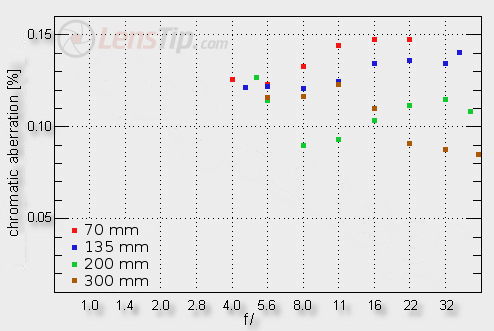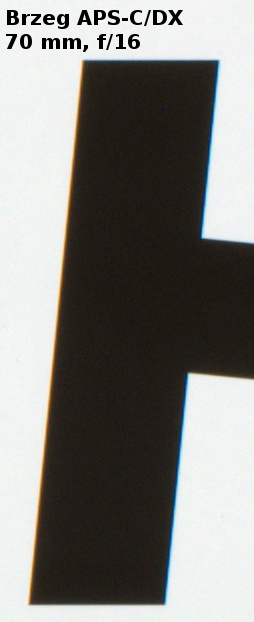Tamron SP 70-300 mm f/4-5.6 Di VC USD
5. Chromatic aberration
The results presented by the lens in the case of the lateral chromatic aberration are shown in the form of two graphs below – the first presents the edge of the DX sensor and the second is for the edge of full frame.


Please Support UsIf you enjoy our reviews and articles, and you want us to continue our work please, support our website by donating through PayPal. The funds are going to be used for paying our editorial team, renting servers, and equipping our testing studio; only that way we will be able to continue providing you interesting content for free. |
- - - - - - - - - - - - - - - - - - - - - - - - - - - - - - - - - - - - - - - - - - - - - - - -
The results are similar to those of the longitudinal aberration so average at most. What’s interesting in most cases the chromatic aberration level is a bit higher on the edge of the DX sensor and it decreases approaching the edge of full frame. For most combinations of apertures and focal lengths the aberration keeps the borderline between average and high level.
In this category the Tamron loses to the Sigma and the Canon significantly but it fares better than the Nikkor, which at 300 mm was able to reach over 0.20%.
 |






